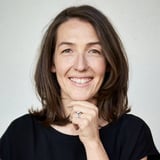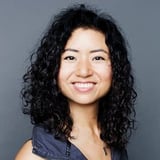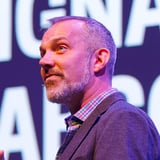Summary
Catherine's talk will cover what an advanced, mixed method team looks like when it covers a broad range of research disciplines (e.g. data, customer experience, market research, digital research etc.), as well as how to make this work for the business and keep pace with ever-changing consumer behaviors.
Key Insights
-
•
Transforming from a siloed specialist model to a multi-disciplinary, task-based approach enables more strategic impact with limited resources.
-
•
Allocating budgets by project objectives rather than by research methodology improves prioritization and capacity planning.
-
•
A small team (9 people) can support a much larger organization (3000 staff) effectively by blending skills and working across disciplines.
-
•
Shifting from reacting to stakeholder demands to proactive strategic planning unlocks team value and influence.
-
•
Introducing transparent resource allocation and triage processes reduces internal concerns and improves responsiveness.
-
•
Empowering junior and mid-level team members to lead projects cultivates leadership skills and enhances motivation.
-
•
Virtual ‘go-to’ person roles help maintain stakeholder relationships and ensure expertise is accessible despite a flexible team structure.
-
•
Change management requires continuous communication, framing the change as future-proofing and engaging staff to be the change.
-
•
Cross-disciplinary work increases learning, innovation, and helps staff develop transferable skills, improving retention.
-
•
Delivering high-quality outputs is the strongest proof-of-concept to win stakeholder trust and secure ongoing investment.
Notable Quotes
"We were spending 90% of our resource responding to tactical queries or performance reporting — essentially marking everyone's homework."
"I wanted to create a model that let us rapidly increase our value within the business."
"We threw out the team structure and started to commission work based on the multiple skills needed for each project."
"Budgets are allocated by project, not by specialism, so investment matches the scale of the question, not the methodology."
"Project leadership can be at any level; the right discipline leads, not necessarily the most senior person."
"Some managers felt undermined because they were part of the delivery team rather than just overseeing it."
"We created a decision tree to help junior staff decide which stakeholder requests to triage and which to respond to directly."
"We introduced 'go-to' people, like account managers, responsible for particular business areas to maintain relationships."
"The proof came from delivering the output — stakeholders stopped questioning the process once they saw the quality research."
"The team can now tell the World Service what to do, not just what the audience thinks."
Or choose a question:
















More Videos

"Non-researchers running their own research can produce mediocre results if they lack operational support and guidance."
Ned Dwyer Emily Stewart James WallisThe Intersection of Design and ResearchOps
September 24, 2024

"Most of our designers are contractors; they have limited voice because they’re bound by contracts."
Michael LandEstablishing Design Operations in Government
February 18, 2021

"It took competitors over seven years to catch up to where Apple is with voice dictation and accessibility."
Sam ProulxTo Boldly Go: The New Frontiers of Accessibility
November 18, 2022

"User experience is not like the sauce you put on your steak to make it taste better. It is the actual protein within the steak."
Vasileios XanthopoulosA Top-Down and Bottom-Up Approach to User-Centric Maturity at Scale
January 8, 2024

"Digital channels now have higher standards—customers expect personalization at all times."
Andrew Custage Michael MallettThe Digital Journey: Research on Consumer Frustration and Loyalty
March 29, 2023

"Don’t schedule your pilot during the holidays — our first pilot had one graduate because it went through December."
Marjorie Stainback Kelsey KingmanTransforming Strategic Research Capacity through Democratization
October 24, 2019

"Repair is any action that prevents negativity from spiraling out of control and helps bring people back to connection."
Alla WeinbergCross-Functional Relationship Design
December 6, 2022

"Caring for people emotionally during insight sessions directly impacts their productivity and willingness to engage."
Jerome “Axle” BrownHow to Use Self-Directed Learning to Ensure Your Research Insights are Heard and Acted Upon
March 11, 2021

"They’re really flexible and listen to our feedback, even though we’re a large company."
Jen Crim Jess Quittner Saritha Kattekola Alex Karr Gurbani PahwaCulture, DIBS & Recruiting
June 11, 2021
















